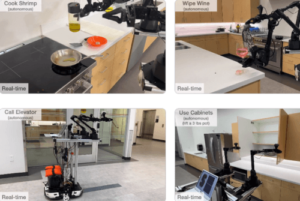
After winning the robotics contest at the University of Surrey, a 3D robotic fish has been created with the exceptional capability of filteirng microplastics and cleaning water bodies. Inspired by the urgency to address the global plastic crisis, this innovative technology promises a new era in environmental conservation.
The idea of creating a robot fish takes inspiration from nature itself, drawing parallels to the intricate movements of marine life. The robotic fish mimics the dexterity and precision of a human hand, allowing it to navigate through water with remarkable agility. Equipped with advanced sensors and artificial intelligence, the robot fist autonomously identifies and collects microplastics with unparalleled efficiency.
How this Robotic Fish Works
The 3D robotic fish operates on a principle of biomimicry, leveraging nature’s designs to combat the environmental consequences of human actions. With its articulated fingers and adaptive grip, the robotic device can gently sift through water, targeting microplastics while minimizing disruption to aquatic life.
The device employs state-of-the-art sensors to detect microplastic particles, distinguishing them from natural debris. Once identified, the robot fist swiftly captures the contaminants, utilizing a secure containment mechanism to prevent any secondary pollution.
This innovative solution marks a significant stride forward in the ongoing battle against plastic pollution. Microplastics, often invisible to the naked eye, pose a severe threat to marine ecosystems and human health. The 3D robotic fish presents a tangible and scalable method to address this crisis, offering a sustainable solution to safeguard our water sources.
Beyond its immediate impact, the technology holds promise for adaptation and scalability. Researchers envision fleets of these robot fish working collaboratively to cleanse large bodies of water, ensuring a more comprehensive and efficient approach to tackling plastic pollution.
Looking Ahead
As the 3D robotic fish undergoes further testing and optimization, environmentalists and technologists alike are optimistic about its potential to revolutionize water cleaning efforts. With a commitment to preserving our planet’s delicate ecosystems, this innovative solution stands as a testament to the power of technology harnessed for environmental good.
In the face of the escalating plastic crisis, the emergence of the 3D robot fish signifies a beacon of hope, pointing toward a future where science and innovation join forces to heal the wounds inflicted upon our planet.
Similar Posts
-
Google LLM VideoPoet – Innovative Model for Zero-Shot Video Generation

-
Microsoft Unveils Copilot as an Independent App for Android Users

-
High-Tech LitterCam Cameras to Tackle Vehicles Causing Litter on Motorways

-
MyShell Introduced OpenVoice: An AI System for Voice Cloning

-
Stanford Unveils Mobile ALOHA: A Revolutionary Learning Robot for Household Task

-
GAIA: Microsoft’s Groundbreaking Technology for Creating Talking Avatars

